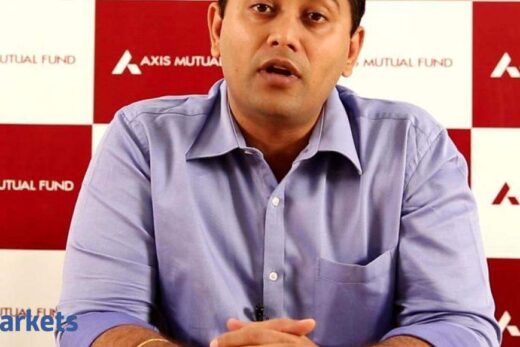Following are the edited excerpts:
With the Budget and RBI policy out of the way, how do you see the macro-economic set-up for the Indian economy for the remainder of 2021?
The UBS India Composite Economic Indicator (UBS India-CEI) continued its recovery trend in the December quarter, even as it plateaued following a swift recovery in the September quarter. We expect India’s GDP to swing into positive territory in the December quarter after declining 7.5% on-year and 23.9% on-year in the previous two quarters. The other lead indicator that we are tracking is the UBS Financial Conditions Index, which is suggests financial conditions have eased to levels better than those registered during the pre-Covid period (Jan-Feb 2020), which is also supporting economic recovery. The Budget was also entirely focused on growth and we did see that the government amending the medium-term fiscal consolidation path. We are maintaining our assumptions that India is likely to see an 11.5% GDP growth for 2021-22, which is going to be one of the fastest in Asia. One thing I must highlight is that the output gap will remain negative throughout and actual economic activity will still be 8% below the level if growth in FY21-22 had been closer to the trend, that is, if there had been no pandemic.
Has the Budget, in your opinion, changed the long-term growth profile of India and what’s your estimate for India’s long-term potential?
We expect India’s medium term growth at 6%. That said, the government policy action in recent months has clearly focused on growth. It started with that steep cut in the corporate tax rate cuts which we think was an inflection point. In 2020, the government announced incentives for manufacturing under the production-linked incentive scheme, easier labour laws, increase in FDI inflows as well as focus back on privatisation. We think that it could help improve India’s productivity and support long-term growth closer to the upside scenario of 7.5% to 8.0%. The big assumption here is that the gap between reform announcement and reform implementation will actually narrow to allow India to move to a higher growth path.
Are you disappointed by the fiscal glide path given by the government, especially since our experience with fiscally expansionary policies have not been that great?
If you look at what the government has done, they have announced amendment of the Fiscal Responsibility and Budget Management Act and now they are saying that they will take the deficit to 4.5% of GDP by 2025-26 versus 3.1% by FY23, which was estimated before the pandemic. Around the global credit crisis, when India continued with expansionary fiscal policy, it caused widening of macro risk and we did see a massive economic imbalance created in the economy during the 2013 taper tantrum episode. What is different this time around is that there is a very strong capital expenditure push in this year’s Budget. If I look at the quality of spending there is a focus on capex, there is focus on public healthcare with the support for the vaccination programme and there is an increasing allocation towards PSU banks recapitalisation. In terms of quality of government spending, if the focus continues to be on capex versus revenue expenditure, then from a three-to-five year perspective, even if government fiscal consolidation remains slow, it will not lead to macro stability risk unlike last time when India pursued an expansionary fiscal policy.
The bond market is not yet convinced that RBI can shoulder all the government borrowings. What quantum of bond purchases will the central bank have to do? Where do you see the 10-year end this financial year?
If we look at the borrowing figures in the Budget, it was a big surprise for the bond markets because it is much higher than expected. The government has come out with a borrowing plan of around Rs 12 lakh crore in the Budget whereas the consensus was somewhere around Rs 10.5 lakh crore. How is it going to be funded is the key risk in our point of view. In our base case, we are estimating a 10-year yield of 6.5% by end of 2021-22 and we do see upside risk depending upon how the Reserve Bank of India is able to handle the borrowing calendar.
After the policy announcement, it is clear that the RBI will maintain its accommodative stance on policy as well as liquidity management for longer. So basically, even with the two-phased normalisation of CRR, the governor mentioned that this has opened up space for a variety of market operations to inject additional liquidity. Our estimate is that the 100 basis points increase in CRR can withdraw around Rs. 1.37 lakh crore of liquidity, which the RBI can then infuse in the form of OMO purchases to ensure that the borrowing programme can run smoothly. We will need RBI intervention both in terms of open market operations and other liquidity support measures including operation Twist to contain the 10-year yields. Otherwise there is a high likelihood that the 10-year bond yield will start to move up through the course of the year.
Will RBI’s OMO purchases in FY22 exceed this year’s figure?
General expectation is that 50-60% of the government’s borrowings are taken care of in the first half. So, we do expect that whatever is happening on the CRR hike in terms of liquidity in the first half of the next financial year, it will be compensated in terms of RBI intervening via open market operations in the bond market. In the second half, we have to see how the macro economy shapes up. We have to see whether the tax revenue collections surprise positively. The Budget has factored in a nominal GDP growth of 14.4%, while we are estimating a nominal GDP growth of 15.4%. So there is a possibility that tax revenue collections could surprise on an upside and that can provide a support to the overall borrowing need in the second half. In the first half, we definitely expect RBI to try and support bond market by using OMOs and ‘Operating Twist’.
There has been much talk about rating agencies’ view on India and their alleged bias against developing countries like India. How much merit do you see in these allegations?
India is rated on the lowest investment grade by all the three rating agencies. Our estimates indicate that India’s debt-to-GDP will go up from 72% pre-pandemic to nearly 89% post pandemic. Our sense is it will stabilise and will not really go much higher from the current levels over the next two years. What we realised is that if the central banks keep policy rates lower for longer, which we expect them to, the rise in debt could actually become associated with the a stable debt servicing cost because the maturing debt is getting refinanced at historically low rates relative to when it was issued. Second, even though India’s potential growth has slowed over the past few years India could still deliver one of the highest medium-term growth rates if we look at across emerging market economies. If the strengthening of reform momentum that we have seen over the past year actually gains momentum over the next few years, we believe India should be able to maintain its investment grade rating. Our base-case is that while there is a risk of one out of the three rating agencies downgrading India’s rating to speculative, what matters is the majority rating for India and we do estimate that India will be able to maintain its investments grade ratings because its ability to deliver on medium-term growth potential remains pretty good.
How do you expect the rupee to fare? Will RBI’s interventions continue?
Looking at the Indian rupee (INR) on a Real Effective Exchange Rate (REER) basis and adjusting for the productivity differential with trading partners, our model indicates the INR is trading past its equilibrium value. We estimate the fair value of INR would be around 68/69 if not for policy-induced depreciation. We think a stronger INR could conflict with the medium-term policy objective of India gaining market share in global supply chains. Also the extent of intervention in the forex market which we saw last year, it will be lot lesser this year because of India will be seeing a current account deficit. Going forward, our global team expects the USD to trend lower due to twin US deficits and a dovish Fed. While this is supportive of EM currencies, we expect the INR to remain largely range-bound against the USD, in the 72-77 range. Our sense is that at a time when there is enough dollar weakness, RBI might allow the rupee to strengthen somewhat from the current levels to take into account the rise in global commodity prices and to reduce its effect on inflation but the trend won’t sustain for long.
Are you concerned if and how central banks are going to normalise their ultra-loose monetary policy?
Well let me connect that to what is happening in India. While the RBI has talked about accommodative stance for longer, you need to think that eventually at some point in time, if not now, how we are going to normalise this easy liquidity policy as it can conflict with financial and macro stability objectives. We think the RBI has been trying to manage the impossible trinity. They are trying to manage foreign exchange rate, the 10-year bond yields and system liquidity which is well into surplus. So far, easier liquidity may not have lead to inflation but there is a risk of easy liquidity chasing risky assets and could be inflationary. At some point in time, if not in the first half, but in the second half the policy makers have to think about policy normalisation because we cannot have an easier financial conditions existing in the economy and at the same time, the economy is moving back to a higher growth path very quickly. So over the next 3-6 months, you have to think about how we are going to go back on the policy normalisation path. Policy normalisation is going to be the next buzz word.



